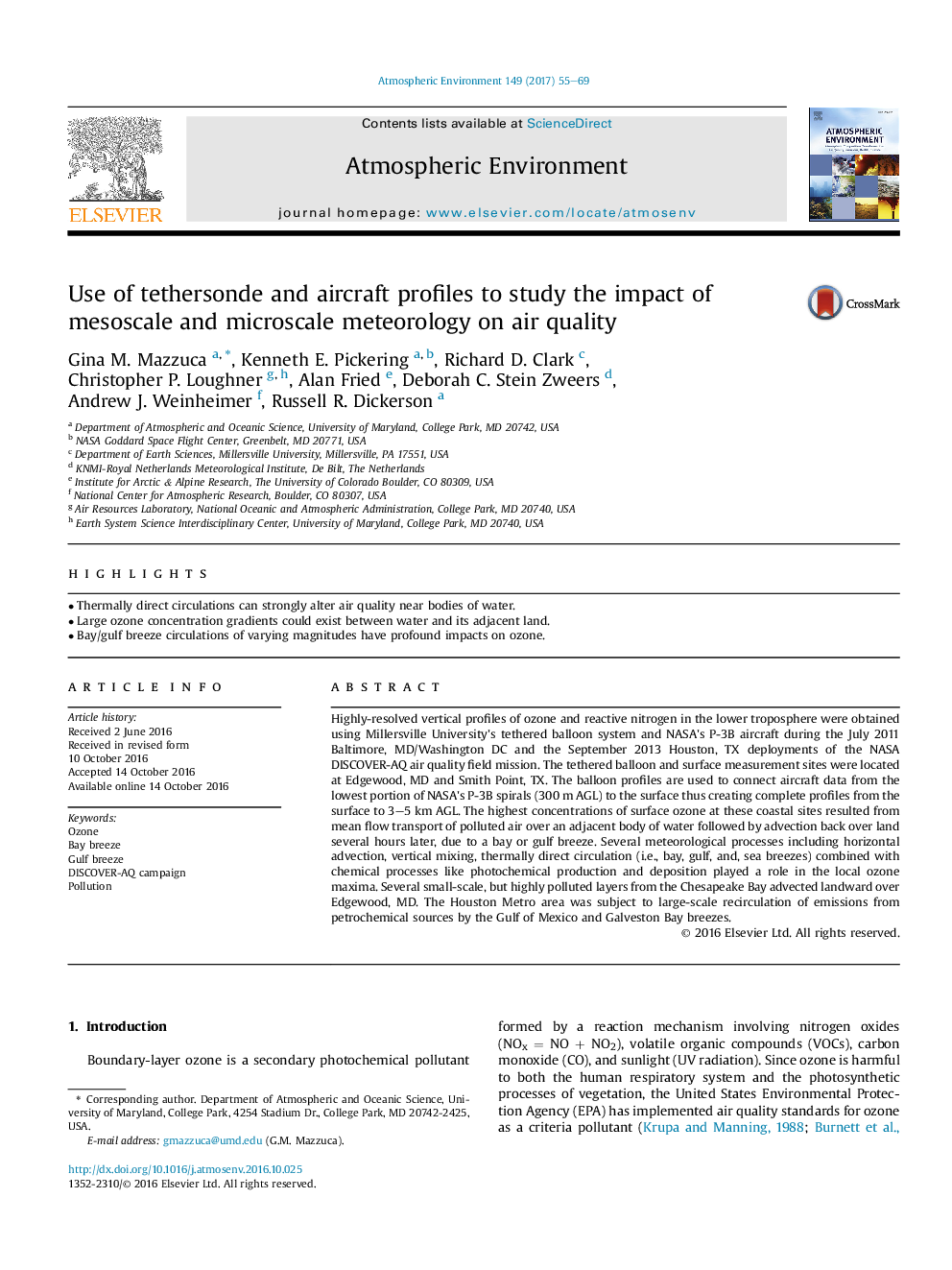| Article ID | Journal | Published Year | Pages | File Type |
|---|---|---|---|---|
| 5753173 | Atmospheric Environment | 2017 | 15 Pages |
Abstract
Highly-resolved vertical profiles of ozone and reactive nitrogen in the lower troposphere were obtained using Millersville University's tethered balloon system and NASA's P-3B aircraft during the July 2011 Baltimore, MD/Washington DC and the September 2013 Houston, TX deployments of the NASA DISCOVER-AQ air quality field mission. The tethered balloon and surface measurement sites were located at Edgewood, MD and Smith Point, TX. The balloon profiles are used to connect aircraft data from the lowest portion of NASA's P-3B spirals (300Â m AGL) to the surface thus creating complete profiles from the surface to 3-5Â km AGL. The highest concentrations of surface ozone at these coastal sites resulted from mean flow transport of polluted air over an adjacent body of water followed by advection back over land several hours later, due to a bay or gulf breeze. Several meteorological processes including horizontal advection, vertical mixing, thermally direct circulation (i.e., bay, gulf, and, sea breezes) combined with chemical processes like photochemical production and deposition played a role in the local ozone maxima. Several small-scale, but highly polluted layers from the Chesapeake Bay advected landward over Edgewood, MD. The Houston Metro area was subject to large-scale recirculation of emissions from petrochemical sources by the Gulf of Mexico and Galveston Bay breezes.
Related Topics
Physical Sciences and Engineering
Earth and Planetary Sciences
Atmospheric Science
Authors
Gina M. Mazzuca, Kenneth E. Pickering, Richard D. Clark, Christopher P. Loughner, Alan Fried, Deborah C. Stein Zweers, Andrew J. Weinheimer, Russell R. Dickerson,
